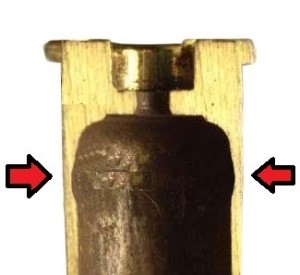When to Neck Size Versus Full-Length Sizing
When to Neck Size Versus Full-Length Sizing
By: Drew Joszku
When should you Neck Size (NS) versus doing a Full-Length (FL) resize on your brass? As most of you undoubtedly know, neck sizing is just resizing the neck of the case instead of resizing the whole brass casing. When you resize the whole case, the brass is thinned and since it has to go somewhere, it generally makes the case a bit longer. As with any metal that thins and stretches, it also loses strength and with that loss of rigidity comes some very unwelcome possibilities (case rupture/failure of some sort that is dangerous to you and/or your firearm). Other than the obvious (always do a full resize on any once-fired brass or any brass not fired from your firearm), there is not really a simple answer as one would think for every other situation. Let’s take a look at the times you should really resize and when the decision is really just preference.
Just like many reloaders, I like to try to get any edge possible concerning accuracy. Be that as it may, doing a lot of research from professional shooters (IE: Benchrest, competitors, etc), I try to pick up tidbits and securely guarded secrets of the art of accuracy. Quite honestly, there really aren’t many actual “secrets” but let’s be frank…most of us have some tips and tricks we might keep to ourselves to give us an edge. Something that I used to hear a lot was that you really had to separate your brass and neck/collet size it for the best accuracy. To me, this sounds like it makes a lot of sense because when the case fire-forms to your firearm, it sounds like it should be easy to connect the dots. Well, I’ve recently read and heard that a lot of the serious pros are doing consistent full-length resizes for every single round. This sounded like reloading heresy to me at first but when I was told the reason why, it actually made a bit of sense to me. I’m not 100% on board at the moment because I have a different reason to neck size (longevity of cases/saving money) instead of supreme accuracy. The reasoning that I was told behind the movement to do FL resizes is consistency. Before you think I’ve lost it…think about it for a second…full-length die sizing brings the case back to original specifications (except the length you might have to trim as a result of doing a FL resize). When you have fire-formed cases, you don’t have a uniform case as all chambers are different and depending on how you insert that case (or how it feeds) into the chamber, as far as orientation, any small flaws could cause any sorts of accuracy degrading problems. For instance, if there is a tiny burr inside your chamber and the case forms around that bump, if the case loads any other way than the way it originally formed, common sense leads us to believe that this outlier could cause a degradation of accuracy. Granted, we are not talking about going from pie plate accuracy to minute of barn door but rather MOA versus sub-MOA. This means a LOT to some more so than others.
Check out this cutaway of some brass that has had a full-length resize completed:

If you look at it (the red arrows), you can see where the case has thinned a good bit and when that continues to occur, bad things can become more probable than just merely possible.
Let’s take a look at this from another perspective…Remember the QuickLOAD article posted recently (you can access it via this link: QuickLOAD Review) The software is outstanding and can help you improve accuracy and all kinds of things by seating bullets just 0.001” deeper or shallower as well as predicting how a projectile with a different ballistic coefficient acts…If you aren’t really following about ballistic coefficients…no worries because I’m just getting into that myself. The point, rather, is that small changes, imperfections or adjustments can impact a lot more than one might imagine.
In my humble opinion, it is best to neck size when you are using the same brass for the same firearm as it can triple (or more) the life expectancy of your cases. Doing a full resize puts a serious hurting on your cases and a lot of people recommend only using them about 5 or so times and also being very, very careful when inspecting them as they go another round. If you are looking for the best accuracy possible and not economics, I would suggest sticking with full-length sizing instead. Me…I’m going to stick with sizing the neck unless I enter some competitions or get seriously into benchrest shooting.
As with all articles on this site related to reloading, these are for informational purposes only. Any and all actions taken by the end user (IE: Reader) are the responsibility of said end user and not the author or website hosting this informal document.
Note: Drew Joszku is an accomplished writer as well as an expert reloader. Some of his articles can also be found on USACarry.



